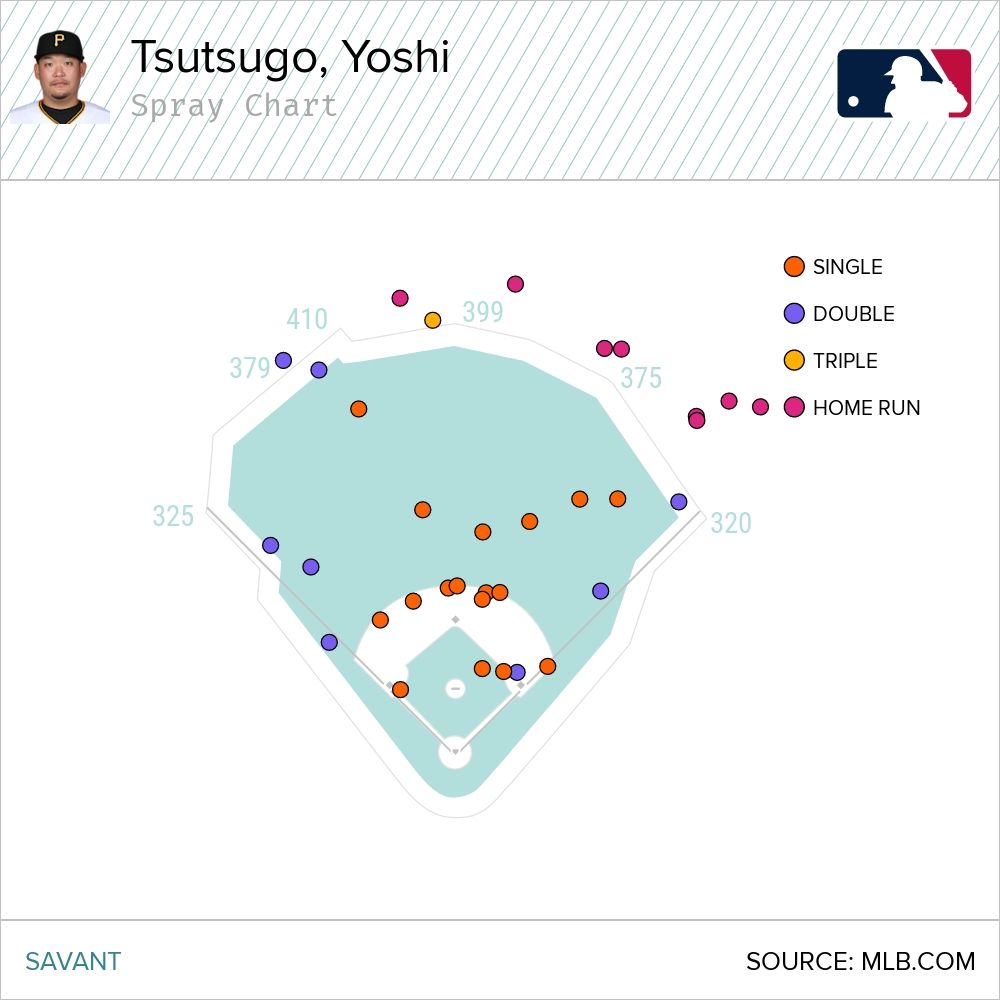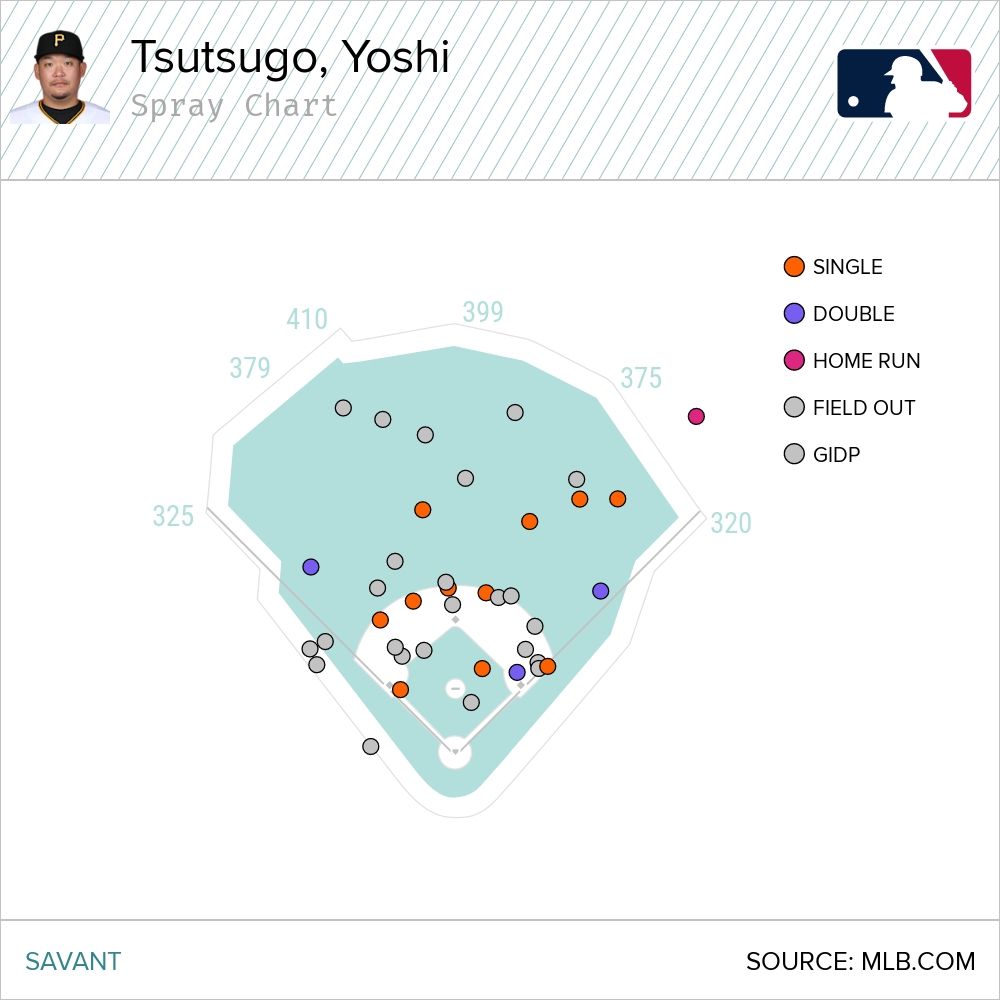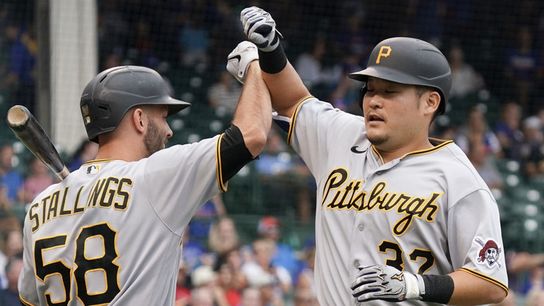I’ll admit that Mound Visit didn’t bat 1.000 in 2021. I’m proud of the quality of analysis on the season as a whole, but it’s baseball. Of course there would be some whiffs in there.
Back in April, I acknowledged that Phillip Evans was going to eventually cool off after his torrid start, but the peripherals suggested it won’t be a “crash landing.” Starting the day after that story ran, Evans had a .220 slugging percentage in the majors and was optioned to the minors multiple times. The plane crashed into the mountains.
In May, I did a Mound Visit on Ka’ai Tom. (Ka’ai Tom, people!) Now to be fair, it was about the number of pitches he was seeing, which is unquestionably a good thing, and I made a point to never say he was having a good or bad season at that point. But still, there are a finite number of these features in a season, and I spent two on two players that aren’t coming back in 2022.
Then there was my piece on Yoshi Tsutusgo shortly after he signed. I’ll admit, I didn’t see the appeal and more or less wrote him off. He ended up posting a .268/.347/.535 slash line with eight homers in his 43 games played with his new team.
Hey, at least I’m owning up to that one.
Tsutsugo is a free agent now and the Pirates are interested in bringing him back. A short-term deal makes sense for both sides, especially if the National League adopts the designated hitter this winter. If he hits, the Pirates get a source of cheap power and Tsutsugo positions himself for a bigger, better contract after the season. If he doesn’t, he can be cut loose without blocking a prospect.
Does keeping Tsutsugo make sense? Absolutely. But those red flags that were present when he signed are still there, namely him being unable to consistently catch up to fastballs.
When the Pirates signed Tsutsugo, he was with the Dodgers’ Class AAA affiliate after being designated for assignment by them and the Rays. He made some minor tweaks to his swing while in the minors, the most visible being cutting down on some lower-half movement as he opens up and landing on his front foot better:
Those changes served him well and made him look more balanced in the box, which contributed to him posting really good results against breaking and offspeed pitches. He had 14 hits in 51 at-bats against non-fastballs, five of which left the yard. From the date of his Pirates debut on August 16, only four National League hitters had more home runs against offspeed or breaking pitches: Bryce Harper (8), Austin Riley (7), Josh Bell (6) and Pete Alonso (6).
But offspeed and breaking pitches weren’t really problems for Tsutsugo. Sure, he’s hitting them better now, but the main hold up was with the fastball, and that still lingers, even after his strong finish.
Before coming to the Pirates, Tsutsugo was hitting .200 with a .246 slugging percentage and 25.5% whiff rate against fastballs. With the Pirates, his whiff rate decreased a bit to 23.3%, and he saw his average rise to .263 while slugging .447. Those last two marks are almost exactly the league average against fastballs this year (.264 average, .446 slugging).
How can I say he struggled against heat then? Because a lot of those hits weren’t quality batted balls.
Let’s take a look at the spray chart of all of Tsutsugo’s hits as a Pirate:

This is a good, balanced spray chart. The homers are, predictably, to his pull side, but he is using all fields and most of his hits are in the air, either via barrels or line drives.
Meanwhile, this is what his spray chart against fastballs in September looked like:

He did run into one for a homer, and there are a handful of flares of burners in the mix, but so many of these batted balls are on the ground. Very few were elevated, and many of those were just lazy fly balls.
Tsutsugo got hits, but the peripherals for them were not good. So while he hit .268 with a .375 slugging clip against fastballs in September, his expected stats (based on exit velocities, launch angle, walk and whiff rates) were an xBA of .181 and xSLG of .251. Those expected stats ranked in the bottom five in baseball among the 176 hitters with at least 50 PAs against fastballs in the final month of the season.
Or how about this: Tsutsugo’s results against the fastball in April and May played a large part in his release and demotion to the minors. His xwOBA in April was .226. In May, .247. In September, it was back down to .238, right in line with his other two full months in the majors. He did do well against fastballs in August, but that was a very small sample size.
-original.jpg)
In this area, the Pirates would be taking basically the same risk re-signing Tsutsugo that they did when they added him in August: Can he catch up with a major league fastball? Sure, he took Kyle Hendricks and J.A. Happ’s heaters deep, but those clock in at 90 mph on a good day anymore. What happens when he faces upper-90s stuff, especially late in the game where having a home run hitter in the lineup makes the biggest impact.
If Tsutsugo can continue to post even roughly league average results against the fastball -- regardless of what the peripherals look like -- then he can probably hit well enough against the offspeed and breaking stuff to still be a good hitter. A darn good hitter, even. That’s a big if, though.
Bringing him back is a very low-risk move for a team that isn’t ready to compete yet in 2022. There’s virtually no downside in rolling the dice and seeing what we should put more stock in: His actual results or his peripherals. But more times than not, the peripherals end up winning out.


